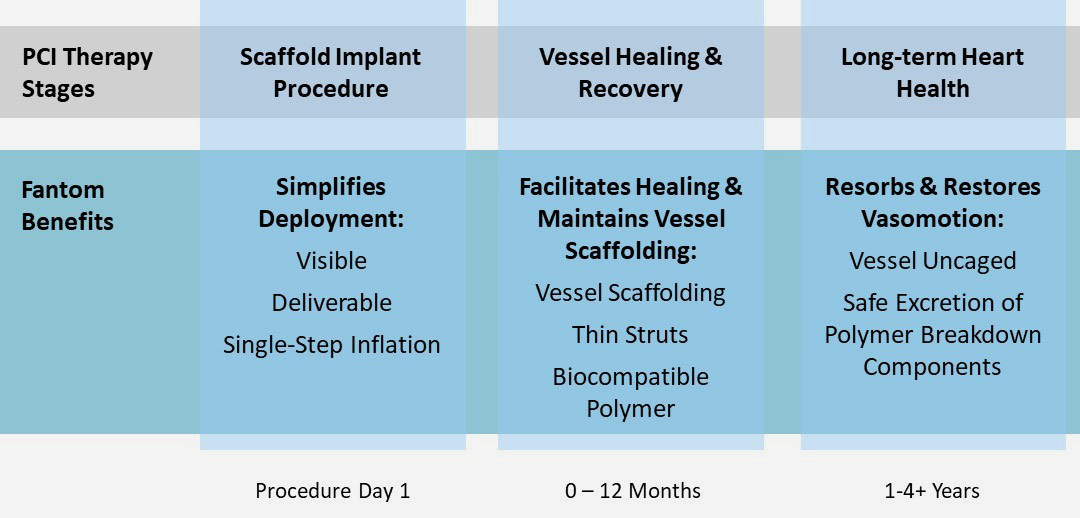Physician Resources
Bioresorbable scaffolds (BRS) are reinventing revascularization for patients with coronary artery disease. REVA is committed to supporting the field of bioresorbable scaffolds through product design, technology development, clinical evidence, and physician education.
Why BRS?
Coronary stents are implanted during PCI procedures to restore blood flow and support the vessel while it heals. Once the vessel is healed, the stent is no longer necessary.
Bioresorbable scaffolds are designed to restore blood flow, support the artery through the healing process, and then disappear (or “resorb”) from the body over a period of time. This resorption is intended to allow the return of natural movement and function to the artery.
Comparison of Metallic DES versus BRS
| Metallic DES | Bioresorbable Scaffolds (BRS) | |
|---|---|---|
| Implant Procedure | Restore blood flow | Restore blood flow |
| Vessel Healing & Recovery | Support the vessel during healing | Support the vessel during healing |
| Long-term Heart Health | Permanent metallic implant:
|
Resorption and restoration:
|
Fantom Encore is Designed to Fulfill the Promise of BRS

References:
- Gada H, et al. 5-year results of a randomized comparison of Xience V everolimus-eluting and Taxus paclitaxel-eluting stents. J Am Coll Cardiol Intv 2013;6:1263-6.
- Kuramitsu S, et al. Incidence and Clinical Impact of Stent Fracture After Everolimus-Eluting Stent Implantation. Circ CI 2012;5:663-671.
See the images and technical details about the world’s most advanced BRS.
The performance is in the polymer.
Review the latest data from the FANTOM clinical program.
Learn about the REVA Technique for successful BRS implantation.


